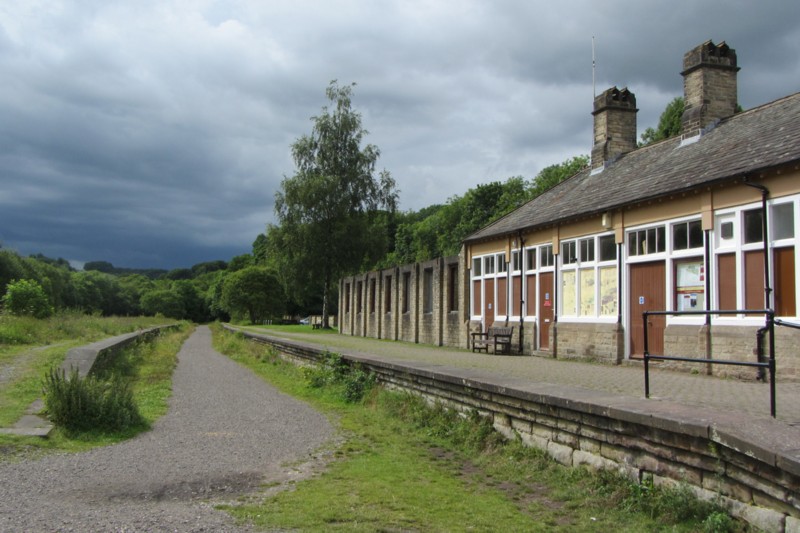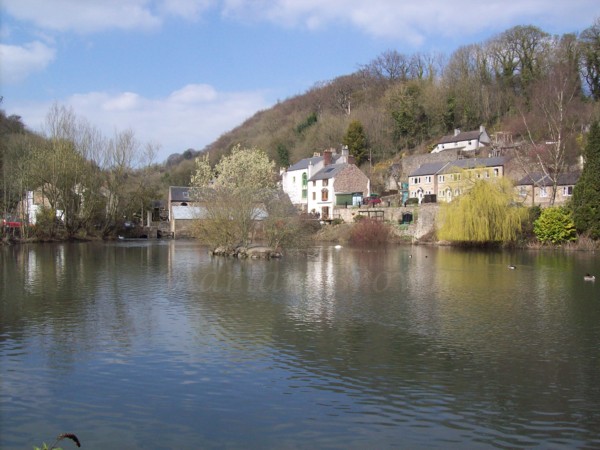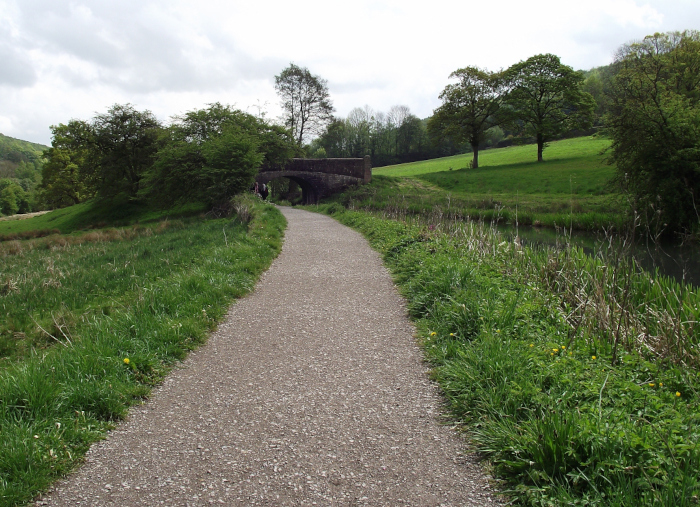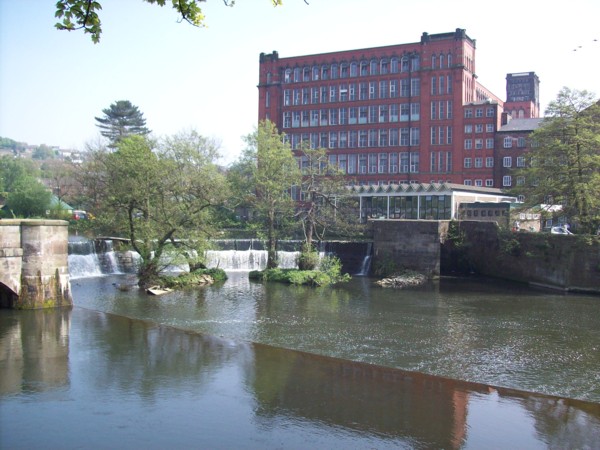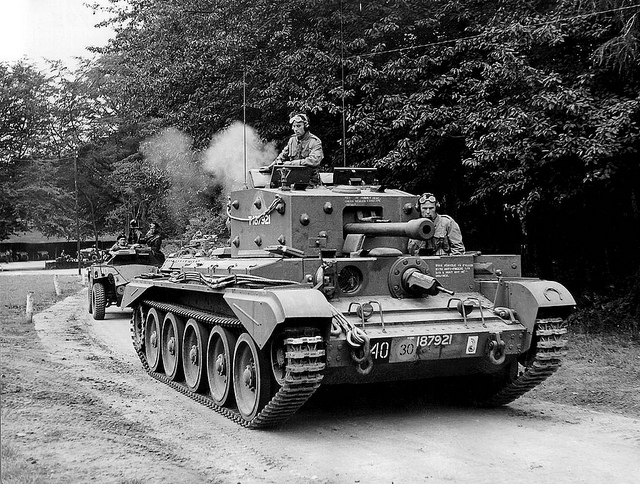
|
Reduced Mobility Walks
Wheelchair-Accessible Walks In Derbyshire And The Peak District
|
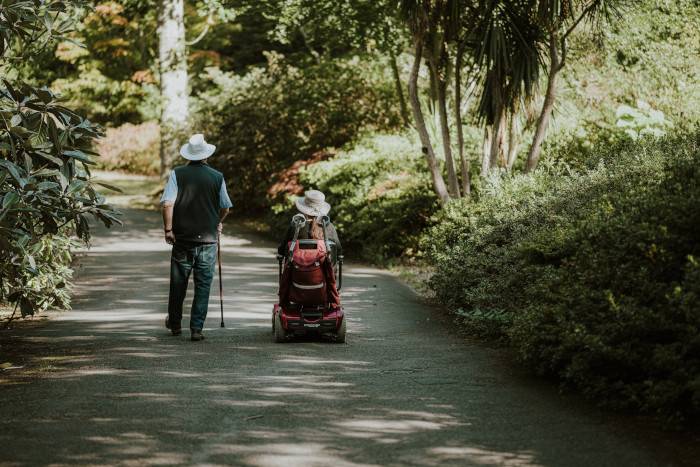





|
|
Derbyshire Heritage Walks is currently the ONLY company offering guide-led walks around the Peak District for persons of reduced mobility such as users of wheelchairs or mobility scooters.
As part of our efforts to make the Peak District and Derbyshire as accessible as possible, we have a range of walks which are suitable for persons of reduced mobility. Some of our standard walks are already wheelchair and mobility scooter accessible, while some of the others can be adapted via minor tweaks to the route. We are also working to develop a range of new routes which combine good surfaces, no steps or stiles, and distances suitable for the majority of electric scooters. The suitability of walks is graded using the same system as developed by Miles Without Stiles, grading the walks as being suitable "For All", "For Many" and "For Some". Details of those definitions can be found below. In addition to the walks listed below, we can also create customised walks on other routes where suitable. If you would like to request a customised walk, please e-mail us to discuss your requirements. |
|
|
|
If you do not have your own mobility scooter, or think that the one you have may not be up to the challenge, it is often possible to hire one for the various walks. Some of the walks begin and end at visitor centres or other locations where it is possible to hire a "Tramper" all-terrain mobility scooter, or it may be possible to hire a "Boma 7" off-road wheelchair from Hoe Grange Holidays. Details of how to hire from the various visitor centres is included in the description of each walk.
If you, or a person you are booking for, are a person of reduced mobility, please either contact us before booking or let us know when you book, so that we can make any necessary adjustments and send you any additional information you may need regarding access arrangements. |
At 6.4 miles in length, this is a slightly shortened version of our full Monsal Trail walk, with step-free access onto the trail at both ends. Starting at Miller's Dale Station and finishing at Bakewell Station, the route is completely flat, with surfacing comprising compacted earth and very fine gravel. This makes it suitable for all types of mobility scooter and wheelchair. Both ends of the walk are accessible by bus from Buxton and Sheffield, although access to the start and finish points does include going up and down hills which may be an issue for self-propelled wheelchairs. Car drop-off and pick-up areas are available at both ends of the walk with level access onto and off the trail.
Distance: 6.4 miles.
Dates available:
|
||||
A six-mile circular route around the northern arm of Ladybower Reservoir, the lowest and newest of the three Upper Derwent Valley dams. Beginning and ending at the Upper Derwent Visitor Centre, this walk loops around both banks of the reservoir, along the way visiting the sites of the two villages sacrified to create the reservoir. It ends back at the Visitor Centre following a slight diversion to the dam wall of Derwent Dam and the memorial to 617 Squadron, better known as "The Dambusters", who used the dam as a practice target prior to the May 1943 mission famously depicted in the classic 1955 movie of the same name.
Distance: 6 miles.
Dates available:
|
||||
Available in a choice of two distances, this is a more challenging route featuring both the Derwent Valley dams and the high gritstone edges above. Beginning by the famous "plugholes" at Ladybower Dam, this walk follows the River Derwent downstream to below the village of Bamford, then along to the outskirts of Hathersage. There, it begins the climb up to below the imposing Stanage Edge via a choice of two different routes, with the longer route offering more of a view of the length of Stanage Edge. The two routes then join together for the long descent back down to the start point by Ladybower Dam.
As it uses a combination of tarmac roads and gravel/earth paths, this walk may not be suitable for all mobility scooters. There are also some steep slopes, and a prolonged steep climb, which make it unsuitable for manual wheelchairs.
Distance: 7.6 or 9.1 miles.
Dates available:
|
||||
A relaxed two-mile stroll around the historic mill village of Cromford, considered by many to be the true birthplace of the Industrial Revolution, led by a guide with over 35 years experience of leading walks around the village. While the regular walk around the village involves a couple of sections which are unsuitable for persons of reduced mobility due to the presence of steps, narrow gates or rough surfaces, the route can be varied to bypass these problem areas without missing out any of the key points of the walk. The walk ends at the gates of Cromford Mill itself, considered to be the world's first true factory, where it is usually possible to join one of the Arkwright Society's own tours of the Mill, or simply wander around the Mill on your own.
Distance: 2 miles.
Dates available:
|
||||
A four-mile circular route beginning and ending at Cromford Wharf, in the shadow of Sir Richard Arkwright's Cromford Mills where the Industrial Revolution began. This walk follows the Cromford Canal to the popular High Peak Junction, site of one of the earliest railway workshops in the world. There, the walk leaves the Canal and follows the route of the old Cromford and High Peak Railway along the High Peak Trail for approximately two miles to Black Rocks. It then descends Cromford Hill into the historic mill village of Cromford, before returning to the start point at the Wharf. All along the way, it looks at the history of the canal and railway, and the various industries in the area that they both served. Additionally, the section along the High Peak Trail offers some fine scenic views out over the Derwent Valley.
Distance: 4 miles.
Dates available:
|
||||
This circular walk around Belper looks at the various lost industries of the world's first cotton mill town. This includes the cotton mills built by the Strutt family at the very beginning of the Industrial Revolution, the houses the family built for their workers, and the nail-making industry that pre-dated the arrival of the cotton mills. It also looks at the other industries which once provided employment for the town, including hosiery, confectionery, chemicals and engineering.
While many wheelchair and mobility scooter users will be able to complete the full normal route for this walk without difficulty, it may be necessary to include some small diversions around rough surfaces for some users.
Distance: 2.8 miles.
Dates available:
|
||||
As seen on ITV News and featured on BBC Radio Derby, this circular walk looks at Belper's little-known wartime secrets. During the Second World War, Belper played a key role in the Allied victory. However, as those "in the know" never really talked about what they were doing, many people today have no idea of just how important a place it was. This walk tells the story of the secret wartime work that took place in Belper and visits the sites involved.
While many wheelchair and mobility scooter users will be able to complete the full normal route for this walk without difficulty, it may be necessary to include some small diversions around rough surfaces for some users.
Distance: 3.5 miles.
Dates available:
|


|

|

|

|
|
